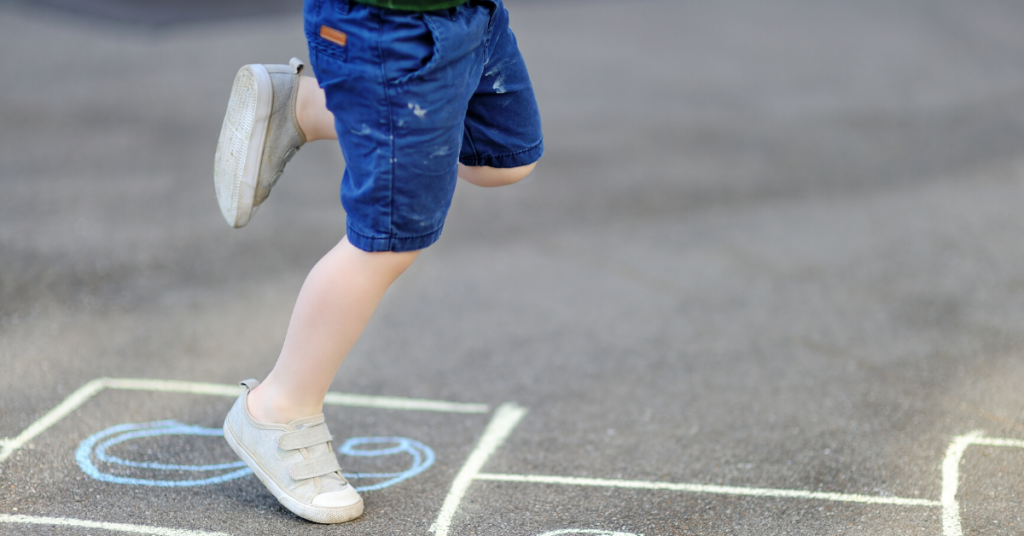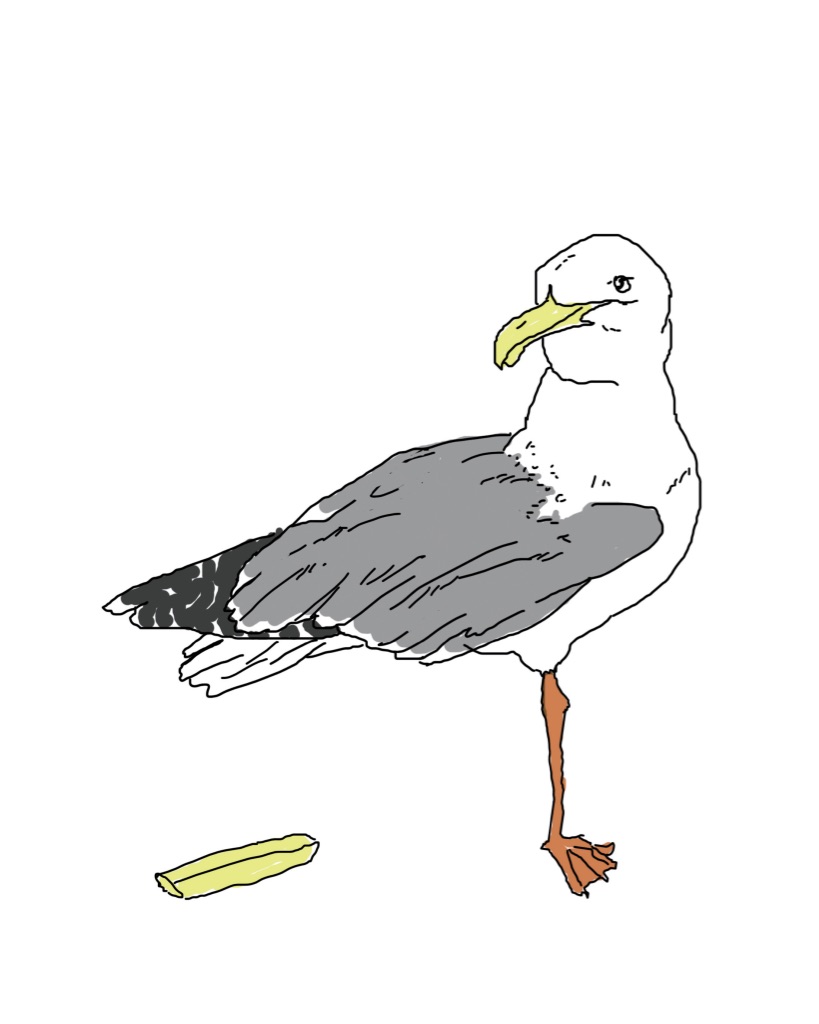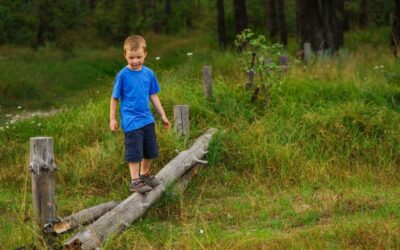The Hop is a Fundamental Movement Skill
Before learning to hop on one leg, young children will need to have developed some degree of dynamic balance and have the ability to jump with both feet clearing the ground. Hopping is a more advanced skill and usually develops between the ages of 5 and 7.
How to do the movement correctly
Hopping is a continuous and rhythmical activity involving springing off one leg and landing on the same leg.
The child stands on their preferred foot and lifts the other leg off the ground, bends at the knee then in the same motion lifts the arms into the air while straightening the bended knee to spring up into the air off the toes – the arms swing forward to provide propulsion before landing on the same leg and repeating.
Young children may practice by hopping up and down on the spot before attempting to hop for distance. It is also good to practice hopping on each leg.

Animal Fun Activity Card#29
One-Legged Seagull
This activity is designed to help children improve their hopping skills. With the focus being on hopping for height rather than distance.


You might like to have the children make paper chains by cutting and glueing strips of paper and intertwining them so that you can hang the chains at any length from whatever frame you have – perhaps a washing line or a pergola beam.
The idea is that children will hop to touch or grab the paper “chip” off the line – if using a paper chain they can see their improvement as they hop higher and pull more loops off the chain.
The Benefits of Playing Hopscotch
Hopscotch is something that can be played alone or with others. It can involve turn taking and learning /obeying game rules. You can show the children how to draw out the Hop Scotch Grid using paving chalk – just make sure you don’t make the squares too big or too small for the size of the feet of the children playing.
By tossing your marker (bottle top) onto the appropriate square the child is practicing their object control and proprioception skills – not throwing too hard or too soft to reach the desired square. Relax these rules for young children and allow them to retrieve their marker and place it on the correct square if their initial throw is off target.
The children are also using motor planning, sequencing and working memory skills as they negotiate the squares – remembering which squares are for hopping and which squares are for jumping, spinning and hopping over.
When standing on one leg and bending over to retrieve the marker, children are doing really strong body work – balancing by engaging all of the large muscles in the core, hips and legs.






Very informative. Thanks
Thanks Ann – more ideas coming soon.
Thanks Sue, I will attach that to week 3 package as week 1 and 2 have been sent and we have the parents focuses on 3 concepts the pine tree for upper core, heron for balancing and the dog on all fours as well as balancing while weeing. It would have to be my students favourite one.
That sounds like a great plan Caroline. Yes, Dog Weeing is a favourite with the children – a little bit naughty – but it perfectly illustrates what we are trying to achieve – if the children think it is fun they will do the activity more often – thereby practising the skill more frequently = faster improvement. Keep up the great work.